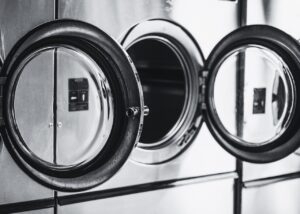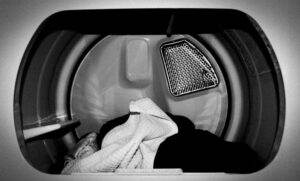Maintaining a clean and organized refrigerator is essential for several reasons. Not only does it help to keep your food fresh and safe to eat, but it also ensures that your refrigerator operates efficiently, saving you money on energy bills. In this article, we will explore the importance of proper refrigerator maintenance and the benefits it brings.
Key Takeaways
- A clean and organized refrigerator is essential for food safety and efficiency.
- Regularly checking temperature settings ensures that food stays fresh and prevents spoilage.
- Overloading the refrigerator can lead to poor air circulation and higher energy consumption.
- Clean and tight door seals prevent cold air from escaping and keep the refrigerator running efficiently.
- Regularly defrosting the freezer prevents ice buildup and maintains proper temperature control.
Keep the Refrigerator Clean and Organized
Keeping your refrigerator clean and organized is crucial for several reasons. Firstly, a clean refrigerator helps to prevent the growth of bacteria and mold, which can contaminate your food and lead to foodborne illnesses. Regularly cleaning the shelves, drawers, and walls of your refrigerator with a mild detergent and warm water can help to eliminate any potential sources of contamination.
In addition to cleanliness, maintaining an organized refrigerator can help you save time and money. By organizing your food items in a logical manner, you can easily find what you need without having to rummage through a cluttered fridge. This can prevent food waste as you are less likely to forget about items that are hidden at the back of the fridge. Furthermore, an organized refrigerator allows for better air circulation, which helps to keep your food at the optimal temperature.
Check the Temperature Settings Regularly
Proper temperature settings are crucial for maintaining the freshness and safety of your food. The ideal temperature for a refrigerator is between 35°F and 38°F (1.7°C and 3.3°C), while the freezer should be set at 0°F (-18°C). It is important to regularly check and adjust these settings to ensure that your food is being stored at the correct temperatures.
To check the temperature settings, you can use a refrigerator thermometer placed in the middle of the fridge or freezer compartment. If the temperature is not within the recommended range, you may need to adjust the thermostat accordingly. It is also important to note that opening the refrigerator door frequently can cause the temperature to fluctuate, so try to minimize the number of times you open the door unnecessarily.
Avoid Overloading the Refrigerator
Overloading your refrigerator can have several negative consequences. Firstly, it can hinder proper air circulation, which is essential for maintaining the optimal temperature and preventing the growth of bacteria. When the refrigerator is overcrowded, cold air cannot circulate freely, leading to uneven cooling and potential spoilage of food.
Overloading the refrigerator can also put a strain on its compressor, leading to increased energy consumption and higher electricity bills. The compressor has to work harder to cool down a packed fridge, which can lead to wear and tear over time. To avoid overloading your refrigerator, try to only store what you need and regularly remove any expired or spoiled items.
Keep the Door Seals Clean and Tight
The door seals, also known as gaskets, play a crucial role in maintaining the efficiency of your refrigerator. They create an airtight seal when the door is closed, preventing warm air from entering and cold air from escaping. If the door seals are dirty or loose, they may not be able to create a proper seal, leading to energy loss and potential food spoilage.
To clean the door seals, you can use a mild detergent and warm water. Gently scrub the seals with a soft brush or sponge, making sure to remove any dirt or debris. It is also important to regularly inspect the seals for any signs of wear or damage. If you notice any cracks or tears in the seals, they should be replaced immediately to ensure proper functioning of your refrigerator.
Regularly Defrost the Freezer
If your refrigerator has a freezer compartment, it is important to regularly defrost it to maintain its efficiency. Over time, ice can build up on the walls of the freezer, reducing its capacity and making it harder for it to maintain the desired temperature. This can lead to increased energy consumption and decreased cooling performance.
To defrost the freezer, you can start by removing all the food and placing it in a cooler or another refrigerator. Turn off the freezer and leave the door open to allow the ice to melt. You can also place towels or a shallow pan of hot water inside the freezer to speed up the defrosting process. Once all the ice has melted, wipe down the walls and shelves with a clean cloth and dry them thoroughly before turning the freezer back on.
Avoid Placing Hot Food in the Refrigerator
Placing hot food directly into the refrigerator can have several negative consequences. Firstly, it can raise the temperature inside the fridge, potentially causing other perishable items to spoil. The hot food can also create condensation, which can lead to moisture buildup and promote the growth of bacteria.
To cool hot food before placing it in the refrigerator, you can use a few different methods. One option is to let it sit at room temperature for a short period of time until it cools down. Alternatively, you can place the hot food in a shallow container and submerge it in an ice bath to speed up the cooling process. Once the food has reached a safe temperature, you can transfer it to the refrigerator for storage.
Keep the Condenser Coils Clean
The condenser coils are an essential component of your refrigerator’s cooling system. They help to remove heat from inside the fridge and release it into the surrounding environment. Over time, dust and debris can accumulate on the condenser coils, reducing their efficiency and causing your refrigerator to work harder to maintain the desired temperature.
To clean the condenser coils, you can start by unplugging your refrigerator from the power source. Locate the coils, which are usually located at the back or bottom of the fridge, and use a vacuum cleaner or a soft brush to remove any dust or debris. It is important to clean the coils at least once or twice a year to ensure optimal performance and energy efficiency.
Replace Old or Faulty Parts Immediately
Regularly inspecting your refrigerator for any signs of old or faulty parts is crucial for maintaining its longevity and efficiency. Some common signs that indicate the need for replacement include unusual noises, leaks, inconsistent cooling, and excessive frost buildup. Ignoring these signs can lead to further damage and potentially costly repairs.
If you notice any issues with your refrigerator, it is important to address them promptly. Contact a professional technician who can diagnose the problem and recommend the appropriate replacement parts. By replacing old or faulty parts immediately, you can prevent further damage to your refrigerator and ensure that it continues to operate efficiently.
Don’t Block the Air Vents
Air vents are located in various parts of your refrigerator and are responsible for circulating cold air throughout the compartments. It is important to keep these vents unblocked to ensure proper air circulation and temperature distribution. Blocking the vents with food items or containers can hinder the cooling process and lead to uneven temperatures inside the fridge.
To keep the air vents unblocked, make sure to arrange your food items in a way that allows for proper airflow. Avoid placing large or bulky items directly in front of the vents and leave some space between the items to allow air to circulate freely. Regularly check the vents and remove any obstructions to ensure optimal cooling performance.
Schedule Regular Maintenance Checks
Scheduling regular maintenance checks for your refrigerator is essential for its longevity and efficiency. Professional technicians can inspect your refrigerator for any potential issues, clean and lubricate moving parts, check temperature settings, and perform any necessary repairs or replacements. Regular maintenance checks can help to identify and address problems before they become major issues, saving you time, money, and potential food spoilage.
The frequency of maintenance checks depends on several factors, including the age and condition of your refrigerator, as well as the manufacturer’s recommendations. As a general guideline, it is recommended to schedule a maintenance check at least once a year. However, if you notice any unusual noises, leaks, or other signs of malfunction, it is important to contact a technician immediately.
Proper refrigerator maintenance is crucial for maintaining the freshness and safety of your food, as well as ensuring the longevity and efficiency of your appliance. By keeping your refrigerator clean and organized, checking the temperature settings regularly, avoiding overloading the fridge, keeping the door seals clean and tight, regularly defrosting the freezer, avoiding placing hot food in the refrigerator, keeping the condenser coils clean, replacing old or faulty parts immediately, not blocking the air vents, and scheduling regular maintenance checks, you can ensure that your refrigerator operates at its best. By following these tips, you can enjoy fresh and safe food while saving money on energy bills.
How Can Preventative Maintenance Help Avoid Appliance Issues?
Preventative maintenance is crucial in avoiding costly appliance issues. By following appliance troubleshooting and repair tips such as cleaning coils, replacing filters, and checking for leaks, you can prolong the lifespan of your appliances and prevent major breakdowns. Regular maintenance can save you time and money in the long run.
How Can I Use These Tips to Address the Common Refrigerator Problems?
When dealing with troubleshooting common refrigerator problems, it’s important to utilize these tips effectively. Start by checking the temperature settings and ensuring proper airflow. Inspect the door seals for any signs of damage and clean the condenser coils regularly. Consider these tips to address various common refrigerator issues.
FAQs
What are some common issues with refrigerators?
Some common issues with refrigerators include temperature fluctuations, leaks, strange noises, and malfunctioning ice makers. These problems can often stem from a variety of causes, such as faulty thermostats or worn-out door seals. To ensure optimal performance, it’s essential to regularly check and maintain key features of a refrigerator, such as the condenser coils and the temperature settings. Regular maintenance can help extend the life of the appliance and prevent more serious issues from arising.
How can I prevent temperature fluctuations in my refrigerator?
To prevent temperature fluctuations in your refrigerator, make sure the door is properly sealed, avoid overloading the fridge, and keep the coils clean.
What can I do to prevent leaks in my refrigerator?
To prevent leaks in your refrigerator, regularly check the water supply line for any damage or leaks, and make sure the drain pan is not overflowing.
What should I do if my refrigerator is making strange noises?
If your refrigerator is making strange noises, try cleaning the condenser coils, checking the fan blades for any damage, and making sure the fridge is level.
How can I prevent issues with my refrigerator’s ice maker?
To prevent issues with your refrigerator’s ice maker, regularly clean the ice maker and the water supply line, and make sure the freezer temperature is set to the correct level.



